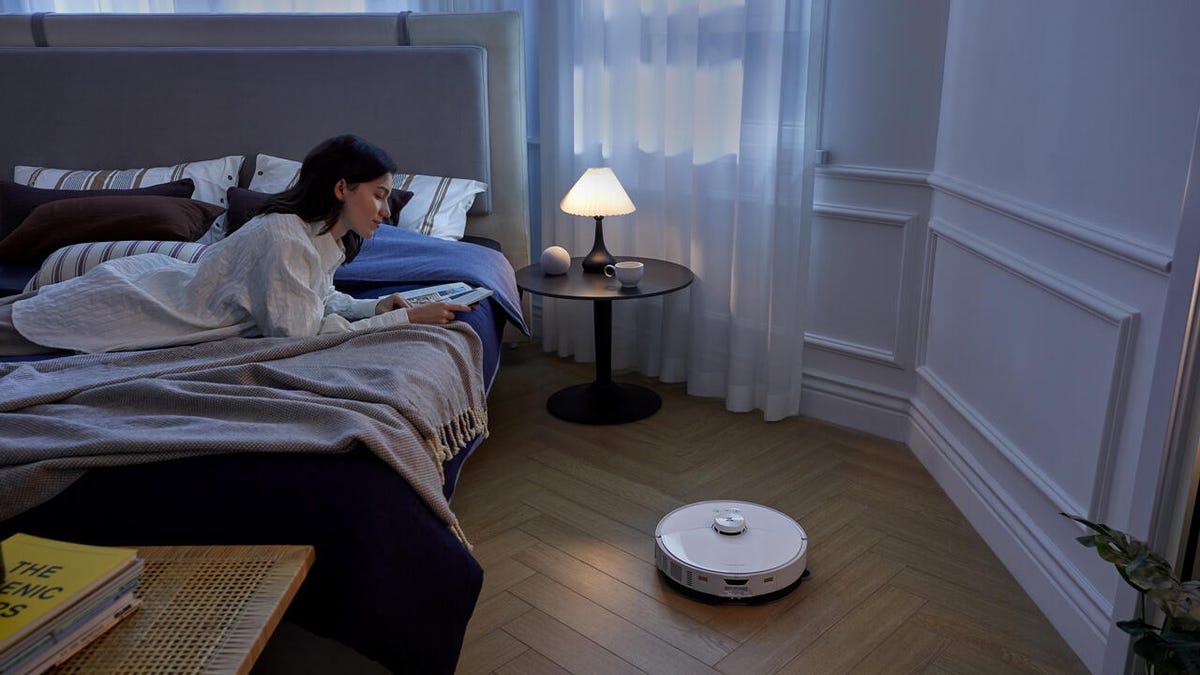The arrival of the COVID-19 pandemic in early 2020 and subsequent stay-at-home directives caused many people to reevaluate their domestic quality of life. For some, this led to adopting additional smart devices and appliances to increase both convenience and comfort. In a recent report, research firm Parks Associates found that U.S. households had an average of 17 connected devices in the third quarter of 2023.
At CES 2024, smart home technology (and everything else) was dominated by one clear trend: AI. Companies whose products added AI technology and other integration were at the front of the pack, and it became increasingly clear how interconnected the household of the future truly would become.
In a live panel sponsored by Roborock entitled “Revolutionizing the Smart Home: The Role of Cleaning Technology in Shaping Future Lifestyles”, product experts and industry analysts agreed that smart home tech will become increasingly de-siloed. Here’s a rundown of what we heard the experts discuss during the session.
From novel to functional
Roborock’s panel debuted a research white paper developed in partnership with IDC, which found global device shipments are expected to reach 880 million units this year. “People were stuck at home during the pandemic, and during that time their home became the center of their universe,” said Tom Mainelli, group vice president at IDC for device and consumer research. “We’re also starting to see these products find their way into emerging markets as well, as prices come down.”
One of the reasons consumers are more interested in smart appliances is simply that homes are better networked than they were a decade ago, said Chuck Martin, IoT expert and author of the book “Digital Transformation 3.0: The New Business-to-Consumer Connections of The Internet of Things.”
“What’s happened in the smart home market is there has been a shift from novelty to functionality,” he said. Martin noted that year-over-year software updates for smart devices, previously a foreign concept, are now a standard requirement for savvy consumers. “Expectations have evolved.”
Mainelli agreed. “For that first generation of adopters, they picked up vacuums for novelty. Now the market has evolved; people want the vacuum to replace the chore altogether.” The experts agreed that the advent of AI, which allows devices to learn, optimize and anticipate over time, will continue to shift and mold the market.

Roborock’s customer-centric approach
Roborock is one of the companies ramping up both AI integration and product innovation to meet the needs of the expanding smart home market. At CES 2024 they debuted four new vacuum/mop autonomous robots as well as two handheld vacuum/mop options for those who find zen in holding a physical appliance as they clean their floors.
The company’s newest line of robots are the S8 MaxV Ultra and S8 MaxV Ultra. In addition to adding Matter compatibility and a self-cleaning docking station, the MaxV line has a “Hello, Rocky” voice assistant that lets users command the robot without having to go into the app. Voice assistant technology is popular with consumers, particularly older ones: Over half of connected home device users over the age of 55 use voice control features, according to a report from Statista, an analytics company.
On the software side, the S8 MaxV Ultra model uses Reactive AI 2.0, a technology that allows a robot vacuum to move around and clean efficiently without hurting anything in the home environment. On the hardware side, the models feature the new FlexiArm Design side brush, a feature we observed that uses a robotic arm and the Extra Edge Mop System to clean hard-to-reach places like corners. “Corner-to-edge cleaning is Roborock’s product focus for 2024,” said Nicole Han, product expert at Roborock. “A robot vacuum’s job is to keep your hands totally free, and that includes self-cleaning.”
Also announced were the Q Revo MaxV and Q Revo Pro series, expanding the company’s product line and giving consumers a foray into smart vacuum and mop convenience at a more accessible price point. “At Roborock, we have one goal: To serve the customer,” said Roborock President Gang Quan during the panel. Additional price point variety in the smart home market will lead to greater adoption overall: IoT spend is expected to reach $1.1 trillion by next year, according to the World Economic Forum.
For those who prefer the grip of a vacuum handle in the palm of their hand, Roborock also showcased its new Flexi series, giving consumers two options that offer combination vacuum-and-mop technology without all the extra robotics.
Quan noted that the MaxV series will have Matter compatibility, further empowering the interconnected smart home of the future. “We’re always open to collaborating with external partners to achieve the common goal of better serving customers,” Quan said.
“Ultimately, for this product category to continue to grow, the device has to do just as good a job as if you were pushing a vacuum yourself.” Mainelli added.
If CES 2024 is a crystal ball, the smart home or tomorrow will actually be a smart home, rather than just a household with a bunch of smart devices in it. By prioritizing products that are at the forefront of the industry, users can reap the benefits of the latest smart home tech – and have a better quality of life along the way.

